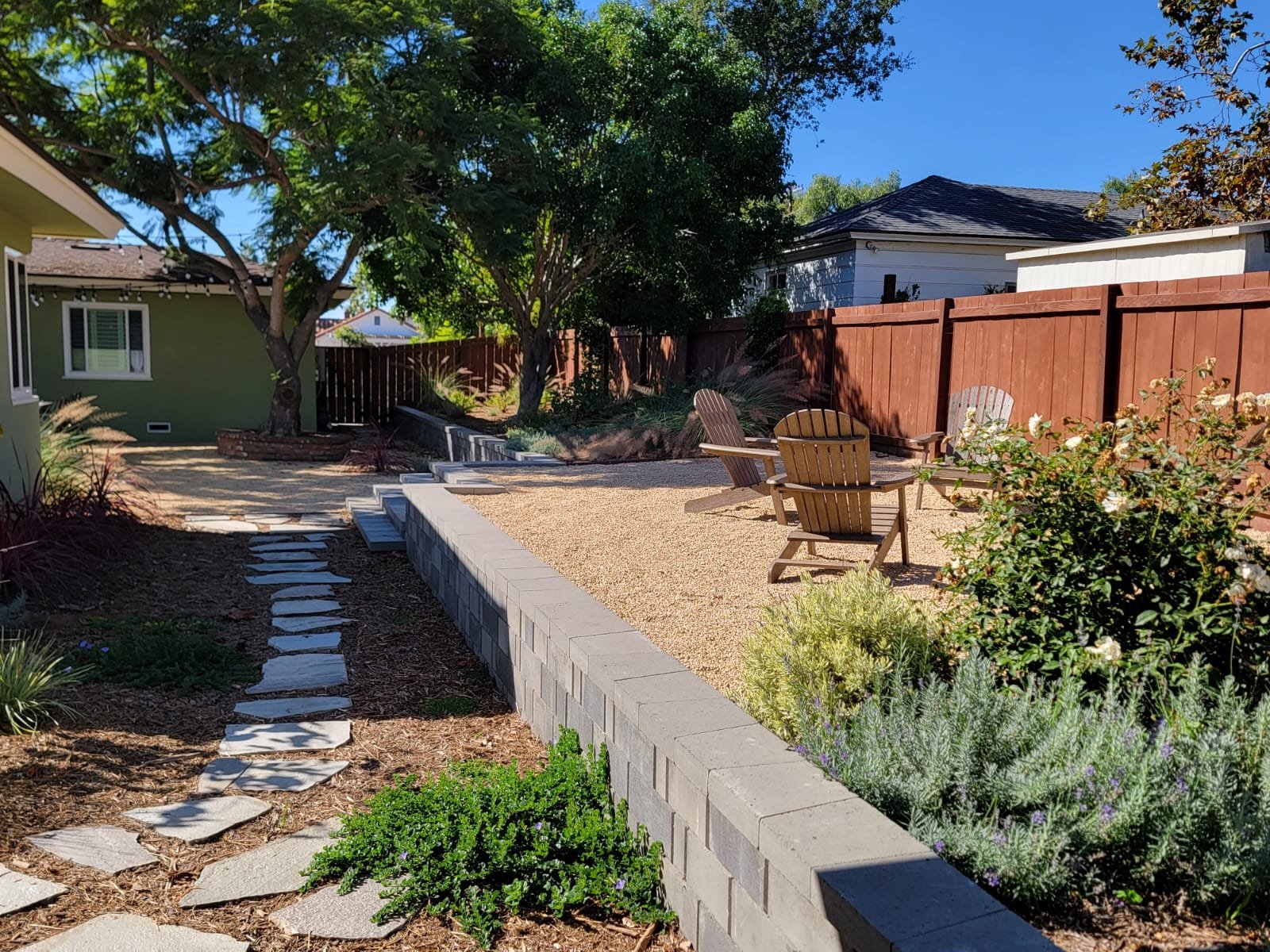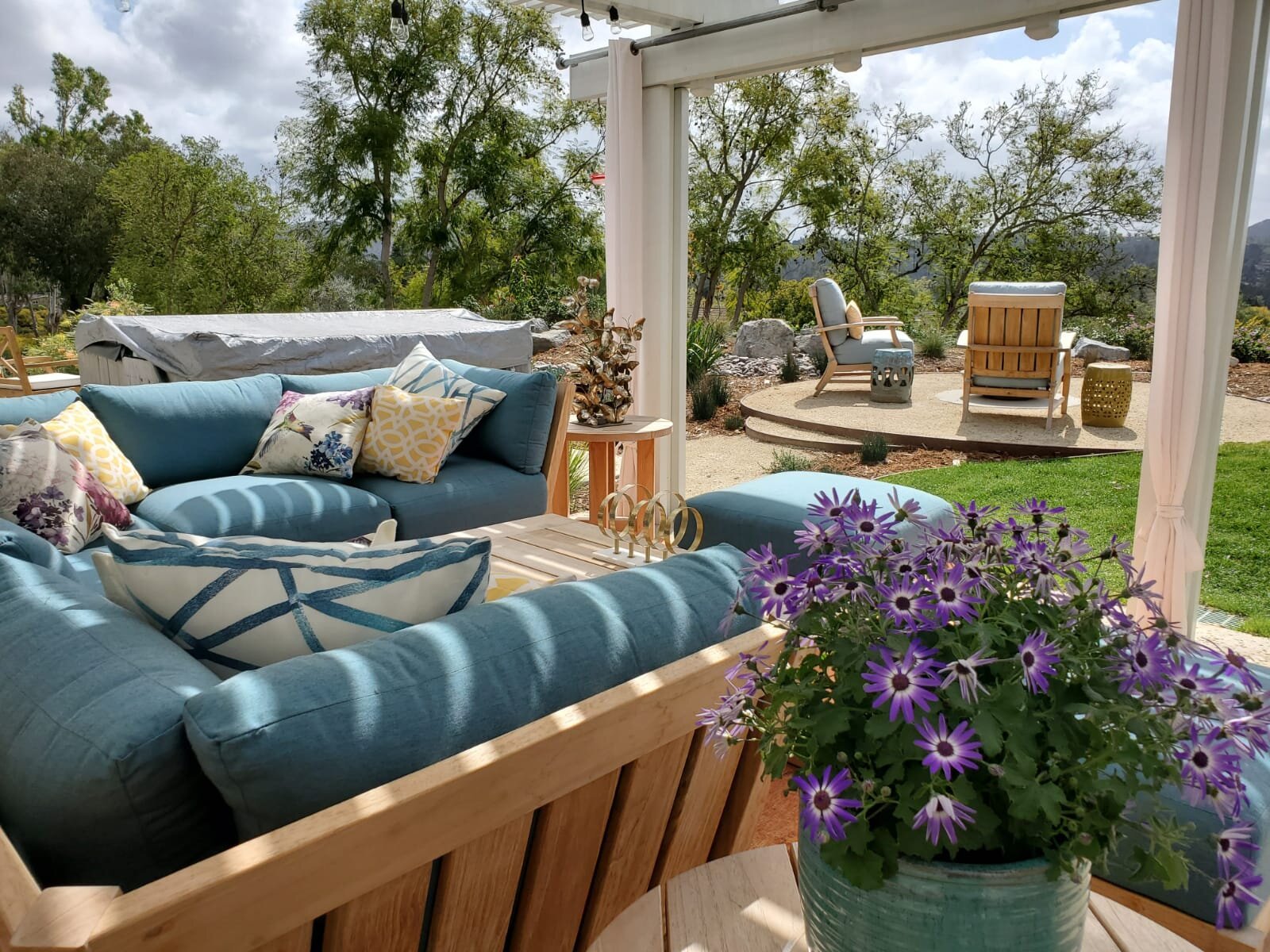~ BLOG ~
7 Pitfalls of DIY Landscape Restoration: When Green Dreams Turn Brown
Transforming your outdoor space into a lush haven seems like a tempting DIY project. The idea of crafting your own Eden, where the flowers bloom, and the grass is greener, is undoubtedly appealing. However, before you give in to the temptation of DIY landscape restoration don your gardening gloves and grab a shovel, let's uncover the potential perils of making landscape restoration a DIY job.
Perils of DIY Landscape Restoration
1. Underestimating the Complexity: Landscape restoration involves more than just planting a few flowers and scattering some mulch. It requires a keen understanding of soil types, plant varieties, and the local climate. Without this knowledge, your green dreams may quickly turn into a brown reality as plants struggle to thrive in an unsuitable environment.
2. Soil Quality Woes: The foundation of a healthy garden is good soil. In the pursuit of translating the garden design in mind into a reality, DIY enthusiasts often overlook the importance of soil testing and amendments. Without a proper understanding of soil composition and nutrient levels, you might be unintentionally setting your plants up for failure. Professional landscapers assess and optimize soil conditions to ensure a thriving garden.
3. Planting Missteps: Choosing the right plants for your region, considering sunlight and water requirements, and understanding growth patterns are crucial aspects of successful landscaping. DIYers might fall into the trap of selecting plants based on aesthetics alone, without considering their compatibility with the local environment. This can lead to plants wilting, withering, or even overtaking other species.
4. Drainage Nightmares: Improper drainage can turn your garden into a waterlogged disaster. DIY landscape restoration may overlook the nuances of proper drainage planning, leading to water pooling around plants, eroding soil, and creating an environment ripe for pests and diseases. Contact us for more details.
5. Timing Troubles: Every plant has its season, and timing is crucial in landscape restoration. Planting at the wrong time or neglecting seasonal considerations can result in poor growth and may even lead to the untimely demise of your green companions.
6. Budget Overruns: While the DIY approach may seem cost-effective initially, the lack of expertise can lead to unexpected expenses. Incorrect plant choices, poor soil preparation, and the need for future corrections can turn your budget-friendly project into a financial headache.
7. Long-Term Maintenance Challenges: A well-designed landscape requires ongoing care. DIYers might not anticipate the long-term maintenance demands of their creations. Without proper planning, your once-beautiful garden could become an overgrown wilderness that demands more time and effort than you initially bargained for.
Conclusion
Revamping outdoor areas brings them back to life, combining good looks with practicality. However, giving in to the temptation of DIY landscape restoration can turn your dreams of a breathtakingly beautiful outdoor space into a nightmare. Whether you want to freshen up an old yard, adjust to changes in the environment, or just make your outdoor space prettier, the landscape restoration services that we offer can make your ideas come true. For top-notch outdoor remodeling, LASD Studio is the name you can count on. We have a wealth of experience, love eco-friendly designs, and always make sure our clients are happy. Call us to hire our services.
Landscape Restoration vs. Landscaping — Understanding the Key Differences
Landscape restoration and landscaping serve distinct purposes — beauty vs biodiversity. Explore how LASD Studio bridges both through design, ecology, and innovation.
At first glance, landscape restoration and traditional landscaping may appear similar — both reshape outdoor spaces. Yet their intentions, methods, and impacts are profoundly different.
At LASD Studio, we design both: crafted landscapes that elevate aesthetics and regenerative systems that heal ecosystems. Understanding the difference helps property owners, developers, and municipalities make informed, future-focused decisions for their land.
Annuals and wildlife and biodiversity in landscape design
Landscape restoration and traditional landscaping may seem similar at first glance, both involving the modification of outdoor spaces. However, they serve distinct purposes and entail different processes. Understanding the key differences between landscape restoration and landscaping can help you choose the right approach for your outdoor project.
Purpose and Vision
Landscaping: Focuses on creating visually appealing, functional spaces — gardens, courtyards, or outdoor living areas that complement architecture.
Landscape Restoration: Landscape restoration, on the other hand, is about returning a site to its natural or historical state. It aims to revive ecosystems, promote biodiversity, and address environmental issues. Restoration projects often involve native plantings, soil improvement, and ecological rejuvenation to repair damaged landscapes or preserve historical sites. it’s about reviving life itself.
Design Philosophy
Landscaping: Guided by creativity and human preference — flexible, expressive, often mixing native and exotic plant palettes.
Landscape Restoration: Guided by ecology and science. The design supports biodiversity, hydrology, and the site’s natural succession processes.
Plant Selection
Landscaping: Prioritizes variety, color, and aesthetic contrast — often using ornamental or non-native species.
Landscape Restoration: Rooted in native species selection, re-establishing local habitats and removing invasive plants to re-balance the ecosystem.
Maintenance and Long-Term Care
Landscaping: Typically requires continuous maintenance — mowing, fertilizing, pruning, and seasonal irrigation.
Landscape Restoration: Aims for self-sustaining balance. Once mature, these systems regulate themselves through natural cycles, soil organisms, and rainfall.
Environmental Impact
Landscaping: Can vary from sustainable to resource-intensive depending on design and materials.
Landscape Restoration: Always restorative — enhancing biodiversity, sequestering carbon, and improving water retention and soil structure.
LASD Studio’s Regenerative Approach
We believe the best landscapes integrate both worlds — the elegance of design and the intelligence of nature.
From urban ecological corridors to private estates, our work seeks harmony: spaces that delight people and empower ecosystems to thrive for decades.
Whether you’re envisioning a refined garden or regenerating a damaged hillside, the right design approach defines the legacy you leave on the land.
At LASD Studio, we create landscapes that endure — where artistry and restoration meet to build the sustainable environments of tomorrow.
Rejuvenating Natural Beauty: Exploring Landscape Restorations in San Diego
San Diego's captivating landscapes are a blend of urban charm and natural allure. As urbanization advances, the need to preserve and restore the region's natural beauty becomes increasingly crucial. Landscape restorations, led by a reliable landscape company, play a pivotal role in maintaining ecological balance, enhancing aesthetic appeal, and fostering a sustainable environment. In this blog, we delve into the significance of landscape restorations in San Diego and how they contribute to the region's vibrant ecosystem.
The Essence of Landscape Restorations
Landscape restorations involve revitalizing natural environments that have been disrupted due to human activities or environmental changes. In San Diego, a city known for its diverse ecosystems, landscape restorations help rejuvenate habitats, restore native plant species, and create harmonious green spaces for both humans and wildlife.
These projects encompass various aspects, from soil enrichment and erosion control to reintroducing native vegetation and managing water resources. By focusing on the unique characteristics of each ecosystem, landscape restorations aim to reestablish the delicate balance that sustains local flora and fauna.
Preserving Biodiversity and Ecosystem Services
San Diego's rich biodiversity is a treasure that needs safeguarding. Landscape restorations contribute significantly to this endeavor by providing a platform for native plant species to thrive. By replacing invasive species and nurturing indigenous plants, these projects create habitats that support a diverse range of wildlife, from birds and insects to small mammals.
Moreover, landscape restorations enhance ecosystem services. They aid in improving air and water quality, mitigating erosion, and increasing green spaces that promote overall well-being. Restored landscapes also offer educational opportunities, allowing communities to connect with nature and learn about the importance of ecological balance.
Sustainable Urban Aesthetics
Landscape restorations go beyond ecological benefits; they also enhance urban aesthetics. Well-designed restored landscapes seamlessly blend with the urban fabric, adding pockets of natural beauty to the cityscape. These spaces serve as retreats for residents, offering tranquility and respite from the bustle of city life.
Restored landscapes can also increase property values, attract tourism, and create a sense of community pride. As cities like San Diego continue to grow, these natural oases become invaluable assets that contribute to the city's charm and overall livability.
Conclusion
Landscape restorations in San Diego are vital for sustaining the region's natural splendor, preserving biodiversity, and fostering a harmonious coexistence between urban and natural environments. By investing in these projects, we contribute to a healthier ecosystem, more vibrant neighborhoods, and a sustainable future.
For unparalleled expertise in landscape restorations, turn to LASD Studio. Their commitment to preserving San Diego's natural beauty shines through their innovative approaches and meticulous attention to detail. With LASD Studio, you can be part of a movement that ensures the beauty of San Diego's landscapes endures for generations to come. Follow us on Facebook for updates.






